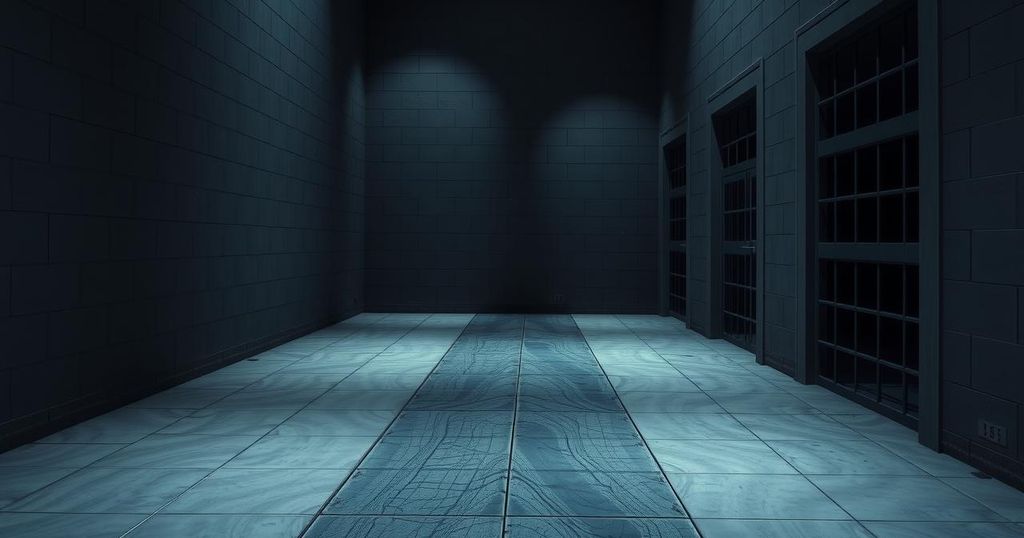Crime
ADVOCATE, AFRICA, ANGOLA, CAROLINE TILLMAN, CHRIS GRANGER, CRIME, DAR, DARREL VANNOY, DEATH PENALTY, DEI, DEIDRE THOMAS, FEDERAL PUBLIC DEFENDER ’ S OFFICE, FEDERAL PUBLIC DEFENDER ’ S OFFICE FOR THE MIDDLE AND WESTERN DISTRICTS OF LOUISIANA, FLORENCE RUFFIN, GUN VIOLENCE, HELEN PREJEAN, HOFFMAN, JESSIE HOFFMAN, JESSIE HOFFMAN JR, JESSIE HOFFMAN, JR, JR, JUSTICE, LA, LA. HOFFMAN, LAUREN SAPP, LAW, LOUISIANA STATE PENITENTIARY, MARY, MARY “, MARY “ MOLLY ” ELLIOTT, MOLLY ” ELLIOTT, MURDER, NEW ORLEANS, NEW ORLEANS ADVOCATE, NORTH AMERICA, TIMES - PICAYUNE, UNITED STATES
Marcus Chen
0 Comments
Louisiana Executes Jessie Hoffman Jr. Using Nitrogen Gas, First in State History
Louisiana executed Jessie Hoffman Jr. using nitrogen gas, its first execution with this method, on March 18, 2025. Convicted of murdering Mary “Molly” Elliott in 1996, Hoffman declined a final statement and meal. His execution proceeded after extensive legal battles and was reported as clinical in nature, marking a new chapter in capital punishment practices in the state.
On March 18, 2025, Louisiana executed Jessie Hoffman Jr. using nitrogen gas, marking the state’s first execution with this method. Hoffman’s execution followed a 15-year hiatus in executions, primarily due to difficulties in procuring lethal injection drugs. Convicted for the 1996 murder of advertising executive Mary “Molly” Elliott, Hoffman chose not to make a final statement or request a last meal before his execution.
Witnesses reported that the execution, which lasted approximately 19 minutes, was conducted without apparent issue. Although Hoffman exhibited involuntary movements during the process, observers described the event as ‘clinical’ and ‘procedural’, suggesting that it occurred as expected under the outlined protocol. Two media representatives present confirmed that nothing during the event caused them concern about the execution’s execution.
Hoffman’s attorneys previously argued that the nitrogen gas method would violate the Eighth Amendment’s ban on cruel and unusual punishment and infringed upon his religious practices. However, the courts, including a 5-4 ruling by the Supreme Court, upheld the execution. Following years of legal disputes seeking a reprieve, officials asserted that it was time for justice for the victims’ families after the prolonged execution lull.
The execution protocol, reflective of Alabama’s method, required Hoffman to wear a respirator mask through which pure nitrogen was administered, depriving his body of oxygen. Witnesses noted he was covered by a blanket as his spiritual adviser accompanied him, with Buddhist chanting audible before the curtains closed.
Nitrogen hypoxia, the protocol utilized in this execution, has been adopted by several states as an alternative method of capital punishment. Recent years have seen a decline in executions nationwide due to legal controversies and diminishing public support for the death penalty. In the wake of Hoffman’s execution, Louisiana Attorney General Liz Murrill stated justice had been delayed, emphasizing that Hoffman faced the ultimate judgment.
The first nitrogen gas execution in Louisiana signifies a notable shift in the state’s approach to capital punishment, following years of executions being paused. Jessie Hoffman Jr., convicted of a 1996 murder, faced execution after numerous legal battles over the method employed. Observers reported the procedure as clinical, despite Hoffman’s involuntary movements during the process. The adoption of nitrogen hypoxia reflects a growing trend among states seeking alternative execution methods amid ongoing legal and ethical discussions surrounding the death penalty.
Original Source: apnews.com




Post Comment